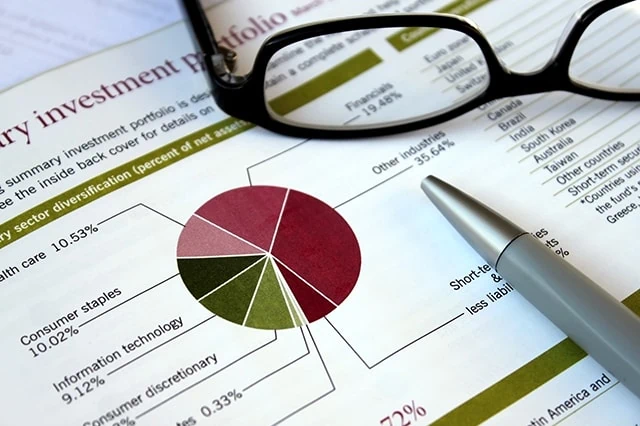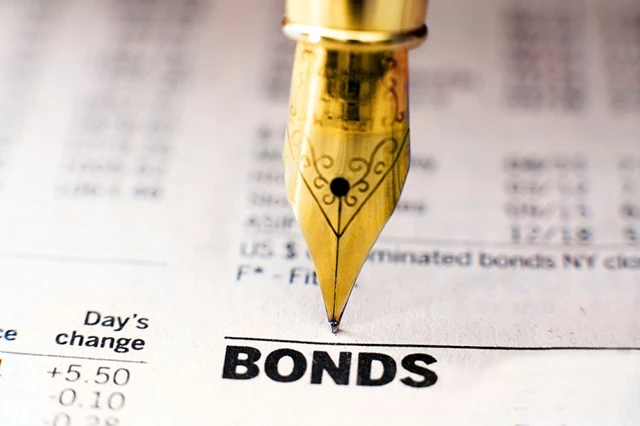Unless you’ve got a massive inheritance coming your way, you’ll probably be funding your retirement with a combination of Social Security and a nest egg of savings. But for most people, getting to that magic number will require more than just stashing cash into a drawer—it will require investing, too, both to make that money grow until retirement, then make it last once you’re in retirement.
The simple act of putting your savings to work in stocks, bonds, and other investments is a big first step. But if you want to make the most of your money, you’ll need to be smart—and tactical—about it.
Today, I’m going to discuss a variety of retirement investment strategies you can put to use, whether you’re saving toward retirement or managing your money while in retirement. This discussion will include a few basic considerations, an explanation of the tools at your disposal, and some investment strategies (including model portfolios).
Featured Financial Products
3 Vital Considerations Before You Strategize and Select Investments

Anyone who’s about to put their money to work needs to consider three vital factors. These factors are somewhat intertwined, but all three will hold an enormous amount of sway over how you invest.
- Age: “Age is just a number.” In some situations that may be true, but as it pertains to retirement investing, it’s a mighty important number. Your age factors into your investment decisions in a number of ways, not the least of which is how long you have for compounding to do its thing. A 20-year-old who puts $1,000 in the market and grows that money at 7% a year will end up with a lot more money by age 70 than a 60-year-old who does the same thing. Your intended retirement age is a factor as well; someone who intends to stop working early will need more retirement savings than someone who plans to retire at full retirement age. Your age also matters as it pertains to when you plan to start collecting Social Security retirement benefits.
- Risk tolerance: Risk tolerance and age go somewhat hand-in-hand. If you’re 20, you have more time to fix mistakes, so you can be more aggressive. If you’re 70, you have basically no time to correct mistakes, so you need to be conservative to preserve your wealth. But risk tolerance isn’t just a financial decision—it’s an emotional decision. If you invest in a way that gives you anxiety and forces you to look at your account balances every single day, you’re doing it wrong. Your investments shouldn’t control how you feel every day. Your investments should bear the most return you can get without them becoming an emotional burden.
- Goal(s): Vague goals, such as “put as much money as possible into my retirement accounts” won’t cut it. You need specific goals that are personalized to your needs. You might have a goal to have a specific amount saved in your 401(k) by a certain age. Or, you might want a specific amount of passive income by a set age. You can crystalize your custom goals with a financial advisor and lay out a plan for how to achieve them.
Once you have these considerations in mind, you can begin formulating an investment strategy that will help you achieve your goals in a way you feel comfortable with, on your timeline.
Investment Tools at Your Fingertips

Next up, we’ll talk about basic asset classes, such as stocks, bonds, and cash and equivalents.
Different assets can help you accomplish different goals. And importantly, some asset classes include a wide range of possible investments, allowing you to fine-tune your retirement portfolio. When you do choose a strategy, that strategy will determine your asset allocation (what percentage of your portfolio’s worth is allocated to each different asset).
Your investment accounts also have a say in the assets you can hold. You can take a look at this list of retirement plans and other accounts for more detail, but in short, different accounts and different providers will allow you to hold different things. For instance, an employer-sponsored 401(k) might only allow you to select from a couple dozen mutual funds. An individual retirement account (IRA) might let you invest in individual stocks, individual bonds, funds, options, futures, and more.
The assets I’m about to discuss are among the most commonly recommended and held investment options. Depending on your account type and provider, you’ll be able to hold these individually and/or through investment funds, including mutual funds, exchange-traded funds (ETFs), or closed-end funds (CEFs).
These are important categories to know whether you plan to handle all of your investing yourself or will work with a financial advisor as these are what most advisors consider when determining suitability for clients.
Stocks

By “stocks,” I’m referring to “common stock”—a security that represents a small amount of ownership in an organization—that is publicly traded on an exchange and thus accessible from your average brokerage account or IRA.
A stock’s value typically fluctuates with market supply and demand, which is largely tied to the company’s financial performance. A stock typically (but not always) comes with voting rights on corporate matters. And for some companies, owning that stock means you’ll also be paid a dividend—a cash payment to shareholders.
Stocks generally represent a powerful, long-term investment due to their high average returns, liquidity, and ability to compound returns over time.
There are many ways to slice and dice stocks. These are the most common ways:
- Growth stocks: Investors expect these stocks’ underlying companies to grow financial metrics such as revenues and profits at a faster rate than others—and they expect that, as these metrics grow, more investors will buy in, driving up the share price.
- Value stocks: Investors believe these stocks trade below various measures of the company’s intrinsic value—and expect that, as other investors become wise to this discount, they will buy in, driving up the share price.
- Dividend (income) stocks: Dividend stocks can rise and fall like any other stock, but they also pay out cash to shareholders, providing an extra source of return. Dividends can be negligible or quite meaningful; they can grow or shrink over time; and they can even disappear.
- Growth-and-income stocks: Growth stocks are often thought to be separate from dividend stocks, as growth companies reinvest their profits to fuel more growth, whereas dividend-paying companies use some of those profits to pay shareholders. But they’re not mutually exclusive. Some companies have the potential to both grow and spend some of their cash on dividends.
- Large- / mid- / small-cap stocks: Another way to categorize stocks is by market capitalization (“market cap”), which measures a company’s size. Definitions vary, but the most common measures are: more than $10 billion for large caps, $2 billion to $10 billion for mid-caps, and less than $2 billion for small caps. Larger companies are generally seen as safer and more stable. Smaller companies are considered riskier but can have much higher upside.
Related: Best Target Date Funds: Vanguard vs. Schwab vs. Fidelity
Bonds / Fixed Income

When investors buy bonds, they are essentially lending money to the issuer. Similar to how banks lend money, the investor is expected to be paid back with interest. Most bonds that you’ll hold will pay you interest regularly until the bond matures (expires). You can either hold the bond until maturity—at which point you’ll receive your principal back—or sell it before it matures.
The maturity date and coupon rate (the interest rate paid based on the bond’s face value) are fixed. So investors should know exactly how much they will earn if the bond is fully repaid. Of course, how much you’ll earn will vary if you sell the bond early.
How much a bond yields depends on a number of factors, including the issuer’s credit rating (based on how likely the issuer is to repay their debt) and the length of the bond (the shorter the bond duration, the likelier it is to be repaid).
Bonds are generally valued for their defensive properties. Bonds produce income, providing another source of returns. Bonds also tend to have much more stable prices than stocks—which is great for preserving your capital, but it does limit their ability to provide growth.
Among the most common types:
- Government bonds: Bonds issued by a country’s government. In the case of the U.S., Treasury bonds are considered to have very low risk of default (nonpayment). That makes them extremely safe—not as certain as a savings account or certificate of deposit (CD), sure, but safer than most anything you can buy through a brokerage account. Because these bonds are considered safe, the government doesn’t have to offer as much yield as other issuers; thus, yields can be low. Treasury bond interest is exempt from state and local income taxes.
- Agency bonds: Agency bonds aren’t directly backed by the government, but they are typically issued by federal agencies or government-sponsored enterprises, such as the Federal Home Loan Mortgage Corporation (Freddie Mac). These are considered slightly less secure than government bonds, but they’re still very high in quality and typically offer a little more income than Treasuries. Interest from some agency bonds is exempt from state and local taxes.
- Municipal bonds: Also known as “munis,” these bonds are issued by cities, counties, or states. Munis generally aren’t considered as safe as government or agency bonds. However, their interest is exempt from federal taxation, and possibly state and local taxes depending on where you live and where the bond was issued.
- Corporate bonds: Companies also issue bonds—typically to fund expansions, investments, or current operations. These bonds have a wide variety of risk but may offer higher yields than government-related bonds. Typically, corporate bonds are divided into two categories. One is “investment-grade” bonds, which are bonds that earn a credit rating of at least BBB- (on the Standard & Poor’s and Fitch scales) or Baa3 (on the Moody’s Credit Ratings scale). The other is …
- High-yield (junk) bonds: These are corporate bonds that are rated below investment grade. Because they have a higher risk of default, they typically require a higher yield to entice investors.
- Preferred stock: Preferred stock is often called a “hybrid” because it has qualities of both common stocks and bonds. Like with common stock, preferreds represent ownership in a company, they’re publicly traded, and they pay dividends. But like a bond, preferreds typically don’t have voting rights, they tend to trade around a par value (so they move far less dramatically than common stock), and the dividend is fixed, much like a bond’s coupon rate. Why are they called preferreds? Dividends paid on these stocks must be paid before dividends on common stock. If a company wants to suspend the dividend on preferred shares, it must first do so to its common stock. And if a company wants to resume paying dividends on its common stock, it must first pay any preferred dividends that went unpaid.
Featured Financial Products
Cash / Cash Equivalents

I’d wager you know what cash is. Cash “equivalents,” meanwhile, mean other financial instruments where you can park your cash and earn some money.
Cash and equivalents are the most defensive assets you can own. They provide the greatest chance of keeping your capital intact, though they also provide very little upside and typically generate less interest income than bonds.
They’re the most boring of these basic assets, but they’re still an important part of any retirement portfolio. Let’s take a look:
- Cash: You can keep cash on you, or in a checking or savings account. However, you can also keep cash in your investment account, where it’s easily deployable should you want to buy more stocks, bonds, or other investments. Cash kept in any of these accounts will typically earn a very modest yield.
- High-yield savings accounts (HYSAs): Aptly named, high-yield savings accounts offer significantly higher annual percentage yields (APYs) than traditional savings accounts. The APY will typically be variable, rising and falling with benchmark interest rates. Some, but not all, HYSAs have minimum deposit requirements and charge fees.
- Certificates of deposit (CDs): You put your money in a CD for a set term, and you will receive that money back (plus a healthy amount of interest) when the term is over. These can deliver higher yields than HYSAs, but you face significant fees if you try to withdraw your money before the term is up.
- Money market funds: These are mutual funds that invest solely in cash and cash equivalents. The price is effectively fixed at $1 per share, and it’s an extremely liquid investment.
Related: How to Max Out Your 401(k) + Other Retirement Accounts
Investment Strategies (And Model Portfolios)
Again, which investment strategy you utilize will largely be determined by your age, risk tolerance, and investment objectives.
Below are five different basic investment objectives, as well as five matching example strategies. The examples are designed to demonstrate the differences among conservative, moderate, and aggressive portfolios.
And I’ll stress this: The strategies provided are merely examples. Exact weightings and specific investments will vary by person. This is not meant to serve as personalized investment advice.
1. Income With Capital Preservation

This is a highly conservative investment strategy. The goal is to generate income and keep the risk of capital loss low. The downside, of course, is that this low-risk retirement income strategy also has low growth potential.
Who is this most suitable for?
Investors who want to ensure a guaranteed income in retirement, especially if they have a low risk tolerance.
Model portfolio
- Stocks (20%): This minimal exposure to equities should include lower-risk stocks such as utilities, consumer staples companies, and other defensive, income-generating firms.
- Bonds / Fixed Income (40%): Because you want to generate income while preserving your capital, you want bonds that fall on the conservative side of the spectrum. Here, that’s Treasuries and agency bonds (Fannie Mae, Freddie Mac, etc.).
- Cash / Cash Equivalents (40%):You’ll want a few months’ worth of cash in a basic checking or savings account for everyday expenses and emergencies. Any amount past that should be considered cash investments, and should be earning more substantial interest in less liquid cash equivalents, such as high-yield savings accounts (HYSAs) or certificates of deposit (CDs).
Related: How Long Will My Savings Last in Retirement? 4 Withdrawal Strategies
2. Income With Moderate Growth

This is a moderately conservative investment strategy—one where your primary goal is to generate income, but as a secondary goal, you would want some moderate capital appreciation.
Who is this most suitable for?
Investors in retirement who want steady income but also want to ensure their nest egg doesn’t wither quickly. It may also be appropriate for investors nearing retirement.
Model portfolio
- Stocks (20%): Stocks in this portfolio should still have a strong emphasis on paying dividends. But because you have a little more interest in growth, stock holdings don’t need to be entirely defensive. This might include investing in large-cap “blue chip” stocks that move roughly in line with the market over time (or invest in “the market” with a fund that tracks a broad-market index like the S&P 500).
- Bonds / Fixed Income (70%): Because you’re looking for some moderate growth to supplement your income in this portfolio strategy, you’ll move along the risk-return curve toward corporate bonds. Investment-grade bonds offer more return than Treasuries or agency bonds but also have demonstrated high levels of creditworthiness.
- Cash / Cash Equivalents (10%): Every portfolio needs some allocation toward cash in case you need to withdraw money for everyday living expenses, a large one-time expense, or an emergency. If liquidity isn’t as important, you can hold it in a mix of higher-yielding, less-liquid cash equivalents like CDs. If you still want some yield but better liquidity, consider holding your cash in HYSAs and/or money market funds.
Related: Health Care Costs in Retirement [Amounts & Types to Expect]
3. Growth With Income

This is a moderate investment strategy that’s equally concerned with both growing your capital and generating some income.
Who is this most suitable for?
This investment portfolio can strike a nice balance for many investors. It’s best for people both in or preparing for retirement who can accept a moderate amount of risk and desire some retirement income.
Model portfolio
- Stocks (70%): You’re trying to strike a balance between both capital growth and income generation, so your stocks can venture outside of defensive names and dividend stocks. You can follow a growth-with-income investment objective and focus on companies across all market caps (though large caps should remain the largest allocation). This stock portfolio will be riskier than the previous two strategies, but also boast higher return potential.
- Bonds / Fixed Income (25%): Investment bonds would be a substantial portion of your bond allocation. You might even consider a small allocation to junk bonds to add higher income and appreciation potential.
- Cash / Cash Equivalents (5%): Because you’re able to generate interest from your higher-yielding bonds and some dividend income, your needs for cash should be less. If you have a smaller cash and cash equivalents allocation, you’ll want these funds to be liquid while still earning some interest. Money market funds are a strong option meeting both of those needs.
Featured Financial Products
4. Growth

This investment strategy focuses on long-term growth and capital appreciation. Creating income isn’t a priority, though some investments may still generate a modest amount of income.
Who is this most suitable for?
This path is suitable for investors with a longer time horizon and above-average risk tolerance. Workers who worry they don’t currently have enough in their retirement accounts and are at risk of outliving their retirement savings may want to focus on growth.
Model portfolio
- Stocks (80%): Given the longer-term nature of this portfolio’s objective, holding riskier stocks makes financial sense. Broad-market index funds might make up the core of your portfolio, but you can hold a small concentration in high-growth sectors like technology. To add more moderate growth to the portfolio, you might consider a minor allocation toward dividend-focused stocks.
- Bonds / Fixed Income (20%): Fixed income is a low priority in this portfolio. Bonds merely offer diversification from the core portfolio focus: long-term capital appreciation from stocks. Therefore, you’ll want this bond allocation to be anchored by high-quality investment-grade bonds that yield some income but offer stability.
- Cash / Cash Equivalents (0%): There is no need to use cash as part of this investment strategy. That said, you might use cash tactically—occasionally keeping a small portion of your portfolio in cash so you can jump on sudden opportunities in the market.
Related: 13 Best Long-Term Stocks to Buy and Hold Forever
5. Aggressive Growth

This portfolio seeks as much growth and capital appreciation as possible. Income generation is a negligible consideration.
Who is this most suitable for?
While the upside is higher, there’s also a higher risk that you could lose money, especially in declining markets. So an aggressive growth strategy should be reserved for investors with a high risk tolerance and those who are far from retirement age—and thus have time to recover from market drops.
Model portfolio
- Stocks (100%): The riskiest investment objective listed here also carries the highest long-term return potential. This means focusing primarily on growth stocks that don’t prioritize paying a dividend, opting to reinvest profits to grow the company instead of distributing dividends to investors.
- Bonds / Fixed Income (0%): Bonds wouldn’t add to the single concern for an aggressive portfolio: maximum growth and capital appreciation. Therefore, this investment objective has no allocation toward fixed income. That said, you might use ultra-short-term bonds tactically—occasionally keeping a small portion of your portfolio in these safe but highly liquid instruments to earn a little interest until you want to deploy funds into a sudden opportunity.
- Cash / Cash Equivalents (0%): There is no need to use cash as part of this investment strategy.
Related: RMDs Too High? 6 Ways to Reduce Them at Age 73
Other Considerations Before You Invest

I’ll briefly list a few more considerations for investors drawing out their retirement roadmap. These are issues or topics that may come up if you discuss your retirement with a financial advisor or wealth management firm.
Time Horizon
Closely related to age is your time horizon, which is the time frame in which your goals must be attained. In terms of retirement savings, this is how far you are from the age you want to retire. For instance, if you are 37 years old and plan to retire at age 67, your time horizon for investing toward your retirement is 30 years.
Liquidity
Liquidity refers to how quickly and easily assets can be converted into cash. Checking accounts and basic savings accounts are highly liquid. High-yield savings accounts and money saved in brokerage accounts (or retirement plans if you’re of retirement age) are fairly liquid. Physical real estate and other alternative investments (such as wine or art) tend to be illiquid.
Taxes
No investment strategies make you completely immune from taxes. Investors are taxed on dividends, interest, and capital gains. Even if you hold tax-advantaged investments, or hold investments in tax-advantaged accounts, you’re paying the IRS at some point, whether that’s upfront, over time, or upon withdrawal.
In addition to capital gains and other taxes, some investors must pay an additional 3.8% levy called net investment income tax (NIIT) if their income passes a certain threshold. Fortunately, strategic tax management can reduce your tax burden substantially.
Laws and Regulations
Always follow all of the legal requirements of investments and avoid any legal prohibitions on types of investments or transactions.
For example, all investors fall into the categories of accredited or non-accredited investors. To qualify as an accredited investor, a person must meet financial or professional criteria. Accredited investors can legally invest in more assets than non-accredited investors. However, that power comes with the additional responsibility to more thoroughly vet some investments.
Unique Circumstances and/or Preferences
It’s unlikely your asset allocation should look identical to your neighbor’s. Besides having different investment objectives, time horizons, and retirement income needs, you may have special circumstances or preferences.
For instance, some people prioritize environmental, social and governance (ESG) investments as they don’t want their money contributing to companies whose morals differ from their own.
Featured Financial Products
Related:





![15 Best Investing Research & Stock Analysis Websites [2026] 24 best stock investment research software and websites](https://youngandtheinvested.com/wp-content/uploads/investment-research-software-and-websites.webp)


